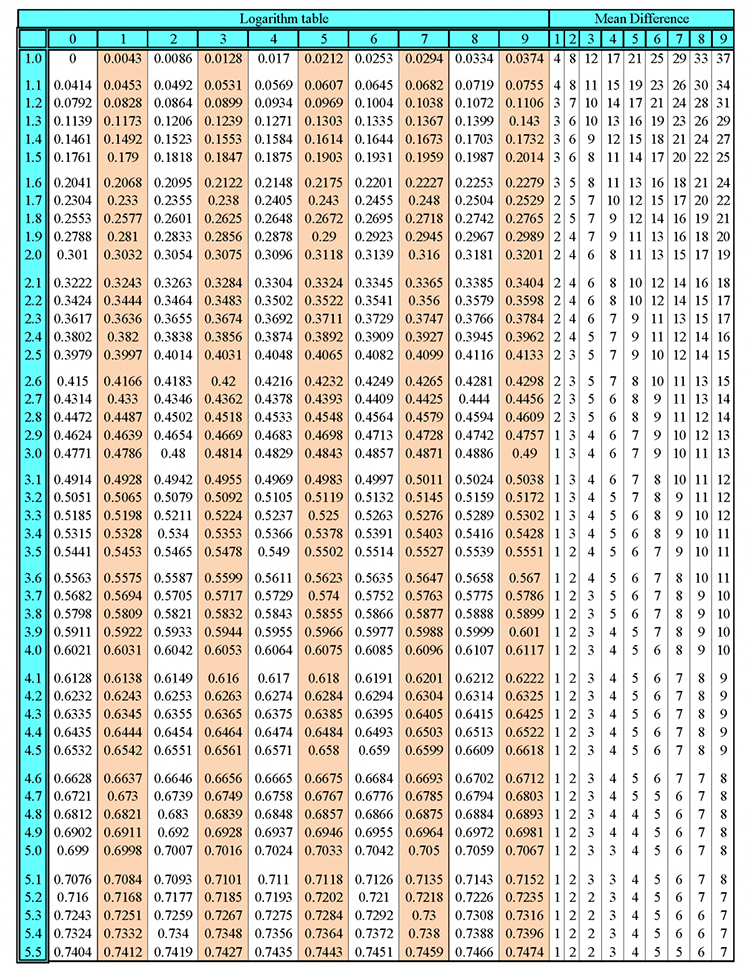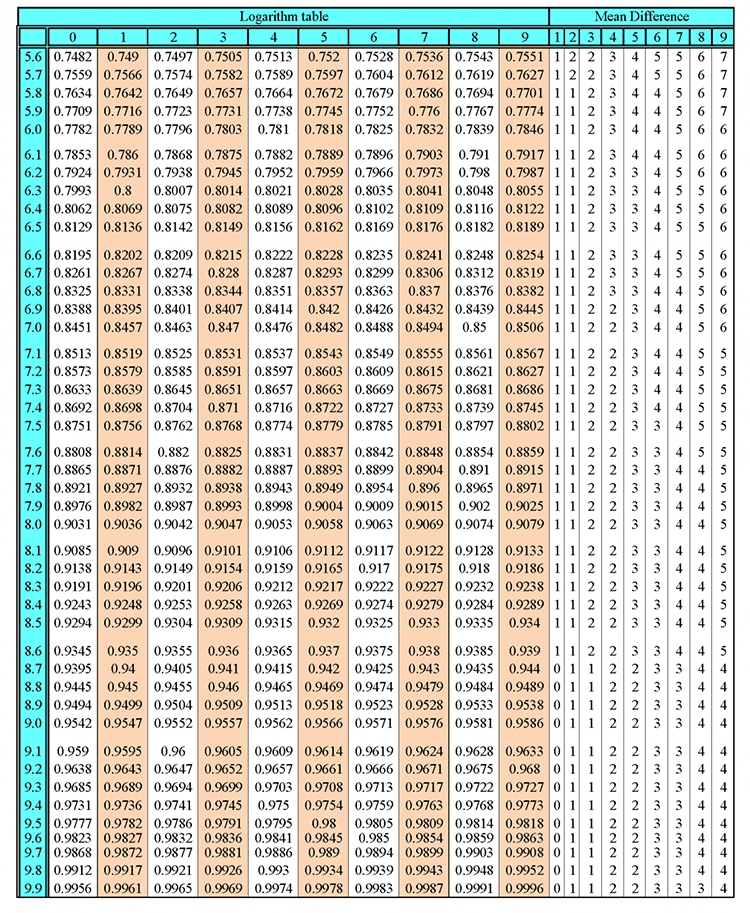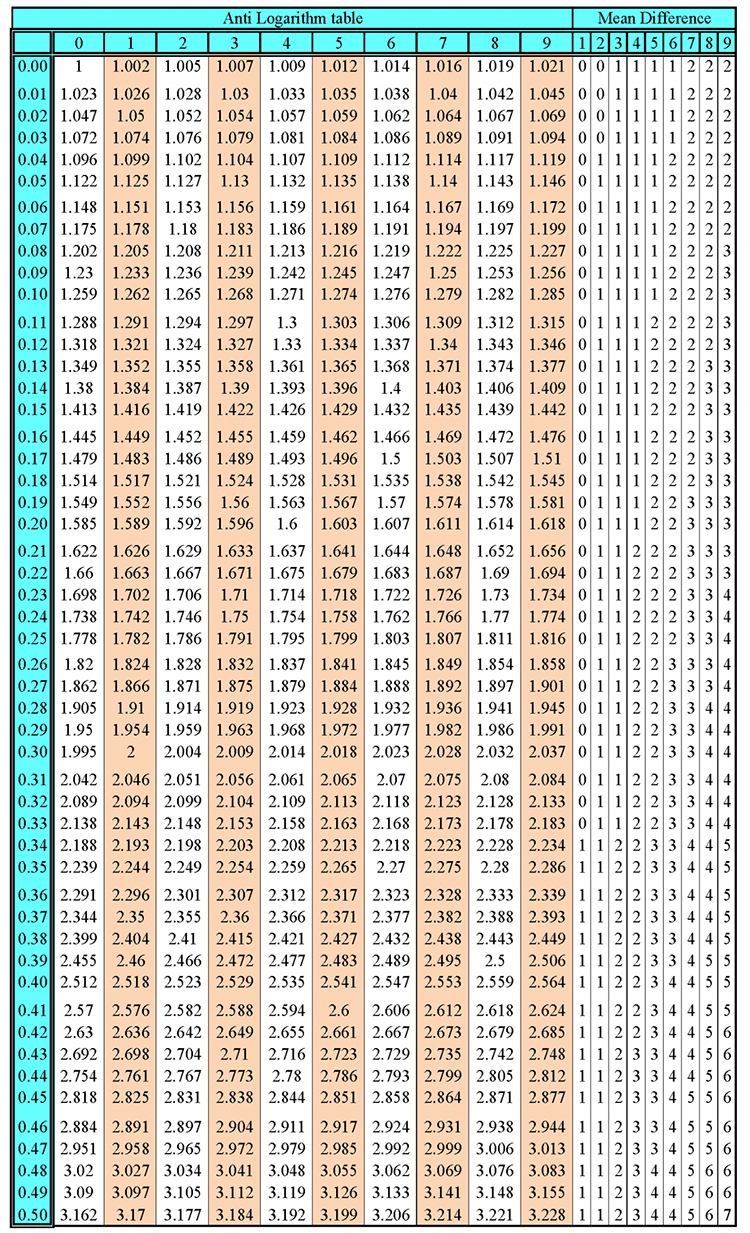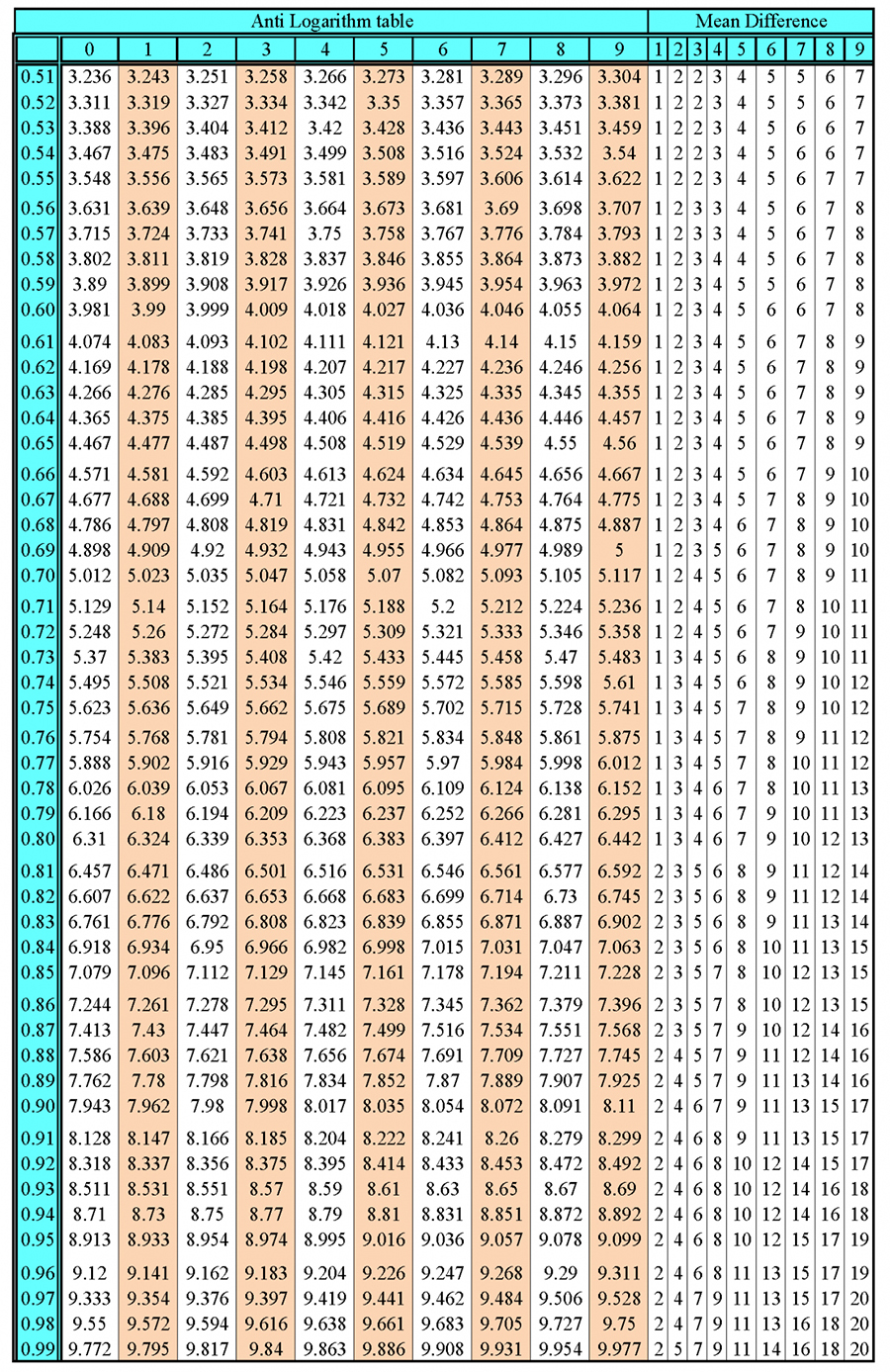Sequence pattern 3 - multiples
The next pattern to look for in a sequence are multiples.
They also call this a geometric sequence or geometric progression.
`3`, `6`, `12`, `24`, `48`
Divide each term by the previous term
`6/3=2`, `12/6=2`, `24/12=2`, `48/24=2`
The multiple used is 2.
Example 1
What are the next two numbers in the following sequence?
`2`, `6`, `18`, `54`, `162`
Is it arithmetic - a consistent difference between numbers?

No it's not
Is it quadratic - a consistent difference between differences?
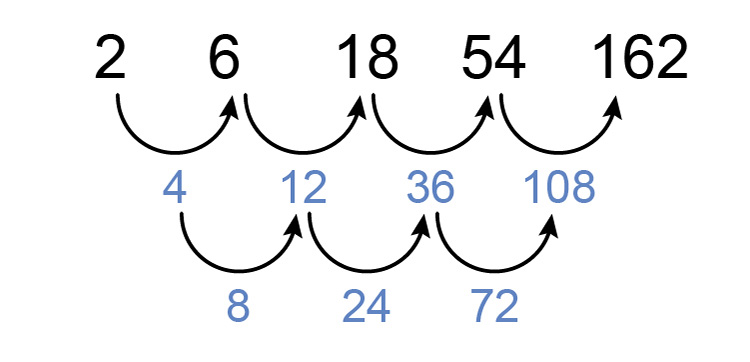
No it's not
Is it a multiple (or geometric sequence)?
`2`, `6`, `18`, `54`, `162`
Divide each term by the previous term
`6/2=3`, `18/6=3`, `54/18=3`, `162/54=3`
Yes, it is. It is a multiple of 3.
So the next two numbers are:
`162times3=486`
and the next would be
`486times3=1,458`
Example 2
What are the next two numbers in the following sequence?
`-2`, `4`, `-8`, `16`, `-32`, `64`
Is it arithmetic - a consistent difference between numbers?

No it's not
Is it a quadratic - a consistent difference between differences?
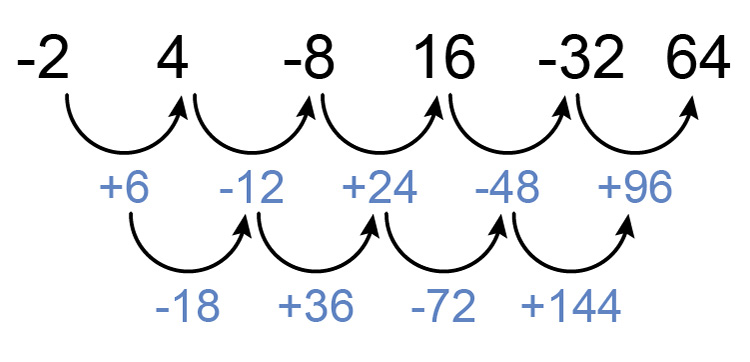
No it's not
Is it a multiple (or geometric sequence)?
`-2`, `4`, `-8`, `16`, `-32`, `64`
Divide each term by the previous term
`4/-2=-2`, `-8/4=-2`, `16/-8=-2`, `-32/16=-2`, `64/-32=-2`
Yes, it is. It is a multiple of `-2`.
So the next two numbers are:
`64times-2=-128`
and the next would be
`-128times-2=256`
Answer the next two numbers are `-128` and `256`
Example 3
What are the next two numbers in the following sequence?
`40`, `20`, `10`, `5`, `2.5`
Is it arithmetic - a consistent difference between numbers?

No it's not
Is it quadratic - a consistent difference between differences?
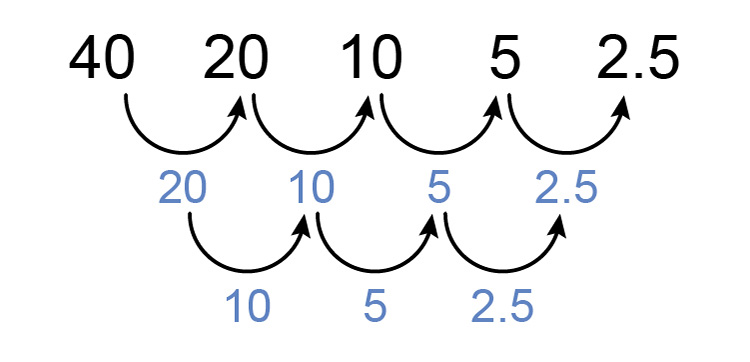
No it's not
Is it a multiple (or geometric sequence)?
`40`, `20`, `10`, `5`, `2.5`
Divide each term by the previous term
`20/40=0.5`, `10/20=0.5`, `5/10=0.5`, `2.5/5=0.5`
Yes, it is. It is a multiple of `0.5`.
So the next two numbers are:
`2.5times0.5=1.25`
and the next would be
`1.25times0.5=0.625`
Answer the next two numbers are `1.25` and `0.625`
Example 4
What are the next two numbers in the following sequence?
`3`, `3sqrt8`, `24`, `24sqrt8`
This is a trick because the only way to tackle this is to:
- Try and keep the first two sequences going, which is
`3` and `3sqrt8` - Then you have to recognise that
`8=sqrt8timessqrt8`
So this sequence could be rewritten
| `3` | `=3` | ||
| `3sqrt8` | `=3sqrt8` | ||
| `24` | `=` | `3timessqrt8timessqrt8` (i.e. `3times8=24`) | `=3sqrt8sqrt8` |
| `24sqrt8` | `=` | `(3timessqrt8timessqrt8)timessqrt8` | `=3sqrt8sqrt8sqrt8` |
So the sequence can be rewritten as:
`3`, `3sqrt8`, `3sqrt8sqrt8`, `3sqrt8sqrt8sqrt8`
Now you can clearly see that dividing each term by the previous term gives
`(3sqrt8)/3=sqrt8`, `(3sqrt8sqrt8)/(3sqrt8)=sqrt8`, `(3sqrt8sqrt8sqrt8)/(3sqrt8sqrt8)=sqrt8`
So this is a multiple of `sqrt8`
The next two numbers in the sequence are
`3sqrt8sqrt8sqrt8timessqrt8=3times8times8=192`
and the next is
`3sqrt8sqrt8sqrt8sqrt8timessqrt8=3times8times8timessqrt8=192sqrt8`
Answer next two numbers are `192` and `192sqrt8`
